Submitted by Berrin Chatzi Chousein
"I don't believe that instinct is separate from rigor, knowledge and research" says Sumayya Vally
Italy Architecture News - Aug 01, 2023 - 10:06 3182 views
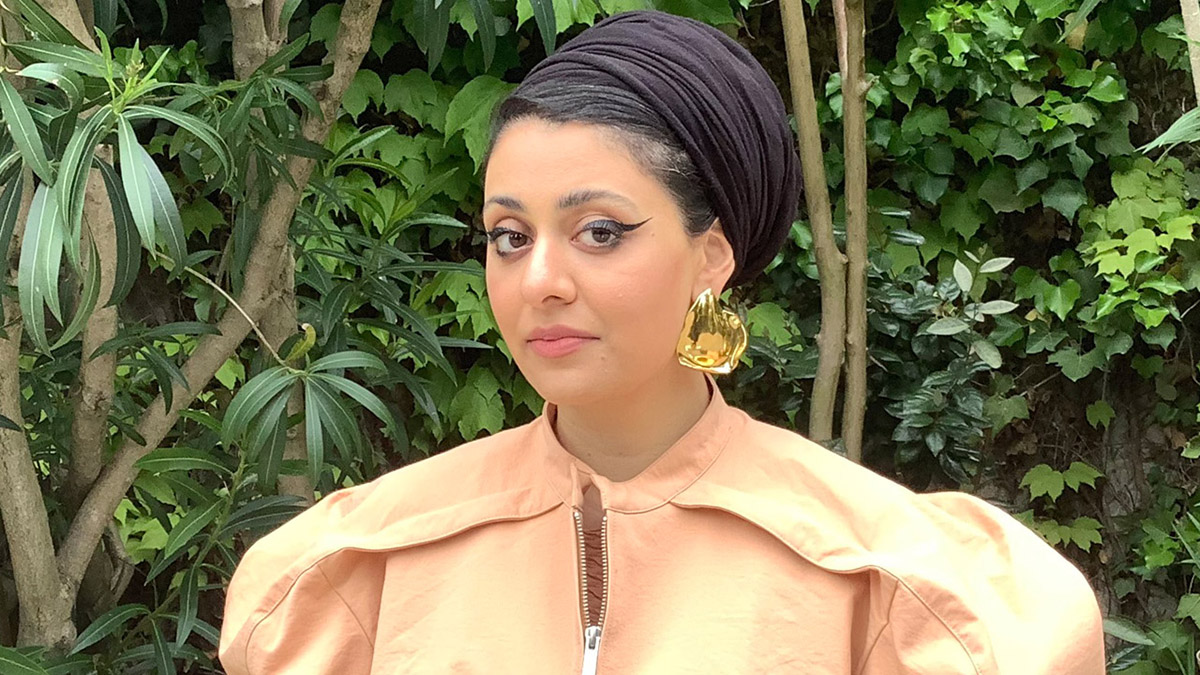
"Instinct cannot be independent of rigor, knowledge and research, according to Counterspace founder Sumayya Vally, and she adds that "I think somewhere they are deeply intertwined."
Speaking to World Architecture Community at the Giardini in the Venice Architecture Biennale, Vally talked about how her research-based studio, Counterspace, was born as a response to a lack of something she found in the profession.
She added that how the rich, vibrant, energetic and the current conditions of her hometown of Johannesburg helped shape her practice's creative philosophy to think about the future of architecture.
Sumayya Vally, a South African architect, is the founder and director of Johannesburg-based studio Counterspace, a studio converges multiple disciplines, exploring pedagogy, history, territory, hybrid and community gathering spaces and continuously searching the other forms of architecture.
Vally, who at 29, was the youngest architect to receive the Serpentine Pavilion's annual commission to design the 2020/2021 Serpentine Pavilion. She is an unstoppable and innovative young architect; and there are many recognitions crowning her career. Featured in the 2021 TIME100 Next List, Vally was the only architect listed among the most influential people under the "Innovators" category.
Sumayya Vally was the artistic director of the first Islamic Arts Biennale, which was on view until May 23 in the Western Hajj Terminal designed by Skidmore, Owings & Merrill in 1981 in Jeddah, Saudi Arabia.
In this exclusive video interview, Vally talked about the constitutive elements behind her creative projects and powerful narratives, the founding story of her practice, the details of her installation, The African Post Office designed together with artist Moad Musbahi, which is being exhibited at the Venice Architecture Biennale, and she explained how her curatorial roles contributed to her vision and practice.
"We were interested in thinking about the future of architectural practice for the profession for the canon, we were really invested in thinking about what architectural practice should be like in our own city. I felt very deeply that the conditions that we have in Johannesburg are very exciting vibrant rich city that we have," Vally said in the video, the WAC filmed in Venice.
"Instinct is also a form of knowledge"
"Counterspace was born as a response to a lack of something that I found in the profession."
"I think, instinct is also a form of knowledge. These layers and layers of experiences embodied and embedded culture, and if we deconstruct those instincts, we'll find that at the basis of that there are threads of knowledge," Vally said.
"It's difficult to answer because I really believe that it's a combination and I believe very much in the power of instinct. I don't believe that instinct is separate from rigor, knowledge and research. I think somewhere they are deeply intertwined.
"The practice is very much research based and all of our practice has a very strong research component as often as we can we translate it into design form."
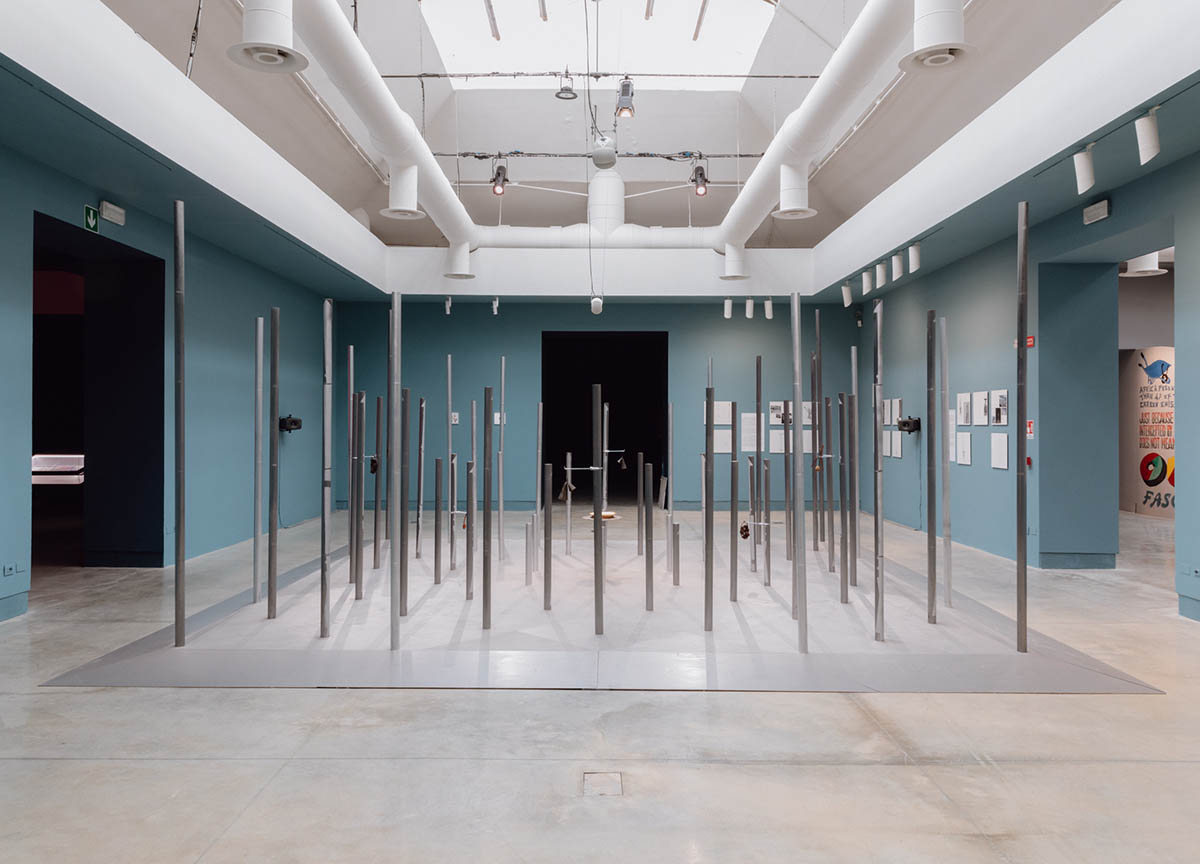
The African Post Office made of a network of posts, building "the logic of minarets and totems". Image © Matteo de Mayda, courtesy of La Biennale di Venezia
The African Post Office by Sumayya Vally together with artist Moad Musbahi
Sumayya Vally together with Moad Musbahi designed an installation, titled The African Post Office, at the Venice Architecture Biennale.
The installation, situated in a special section, called Force Majeure, that forms one of the six parts of The Laboratory of the Future curated by Lesley Lokko at this year's Venice Architecture Biennale.
In the video, Vally explained how she met with Moad Musbahi and how their installation aims to find resonances for thinking about intersectional African dialogues, hybridities, and find commonalities, specificities and differences.
"Moad is from North Africa and I am from South Africa, and I think there's also something really interesting that we're asking in terms of intersectional African dialogues and in working across the continent to find resonances to just find commonalities, specificities and differences in how spaces are made," Vally said.
"The project is asking questions about the future of cross-continental dialogue on the continent and that we were thinking about reference points from across the continent and bringing them together in a singular installation."
"There's something in that speaks to other aspects of my work that is interested in diasporic or hybrid identities and how we find design form for that," she added.

The African Post Office made of a network of posts, building "the logic of minarets and totems". Image © Matteo de Mayda, courtesy of La Biennale di Venezia
Venice Architecture Biennale really renders so many different views, so many diverse and divergent perspectives
Vally believes the incredible diversity and richness of the African continent still lacks recognition, and emphasizing that this year's exhibition can reveal many nuances, diversity and various kinds of practices.
"This exhibition really renders so many different views, so many diverse and divergent perspectives that it is impossible to paint a homogenous view of the continent through the exhibition," said Vally.
"I think that the continent has suffered for a long time that it's often not recognized for its richness for its incredible diversity. There is so much nuances and it's the scale of the continent is enormous."
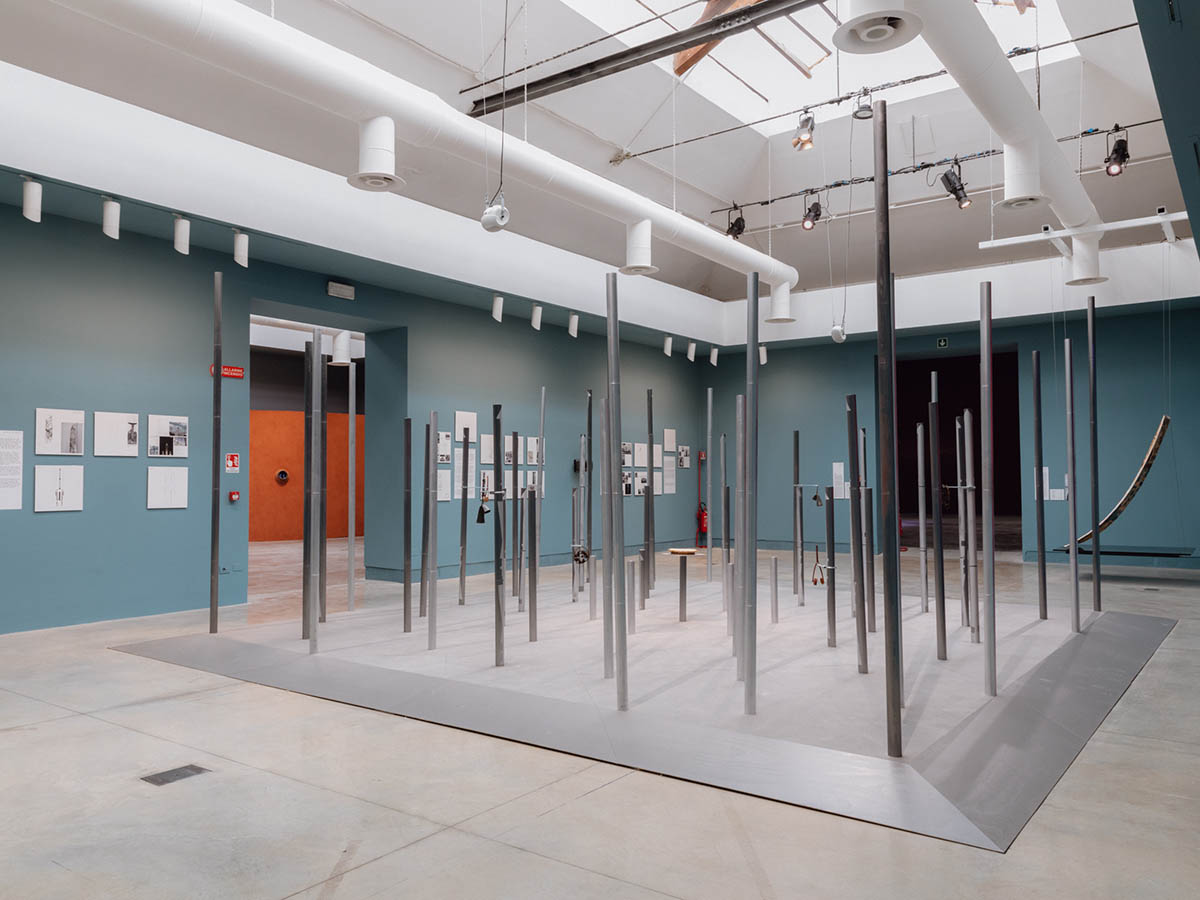
The African Post Office made of a network of posts, building "the logic of minarets and totems". Image © Matteo de Mayda, courtesy of La Biennale di Venezia
"There are so many perspectives, and I think there is the sheer diversity of the kinds of practices that are exhibited in the Venice Architecture Biennale. We see the very different methods of working throughout the biennale," she added.
"We see projects that are very much thinking about African vernaculars about how we start to work with forms of material that we've inherited and about how we go back to listening to the land collaborating with the seasons, and how practice can really emerge from these bodies of knowledge that the architectural community certainly hasn't paid enough attention."
"We have so many projects that are digital and speculative and really thinking about different forms of architectural practice in and of themselves. I think those methods come from conditions that are inspired by context on the continent," Vally said.
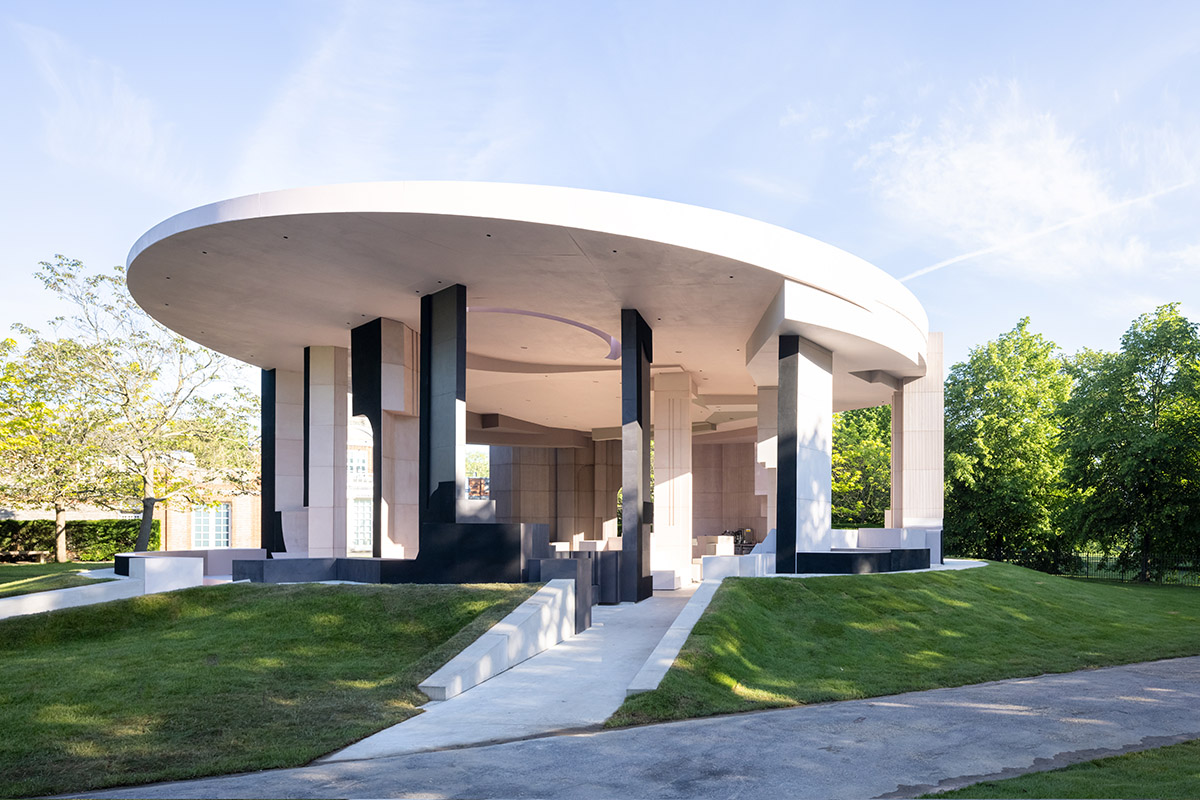
Sumayya Vally designed the 20th Serpentine Pavilion in London's Kensington Gardens in 2021. Image © Iwan Baan
Emphasizing that expressions such as multiplicity, diversity, hybrid assets, pluralism and cultural identity can also exist in an abstract or invisible way in the projects, Vally believes that they should not always be defined through some certain visible objects or spaces.
"We have to operate at both levels I think sometimes in a context like this it can be an opportunity to operate on the abstract and to work with the platform to further research endeavor," Vally said in the video.
"Or, it can be a platform to communicate something very publicly. I think it is both abstract and it isn't."
"I think when we make both architecture and when we make installations, these are in a sense inhabited by the world and by our community but I believe very much that there should always be these two scales architecture in, and of itself is also abstract."
"It's a condensation of so many forces."
"The designer or the architect is thinking about the unaware of that operating in the abstract and it doesn't mean they don't have real implication," Vally said.

Anywhere can be a place of worship by Syn Architects was exhibited in the Islamic Arts Biennale in Jeddah. Image © Laurian Ghinitoiu
The importance of migrant and community gathering spaces
"I'm really interested in working with history as a site of interest. I’m thinking about forms of belonging and sometimes these forms of belonging come from things that come from our histories," said Vally.
"Other times they come from the presence of some aspect of culture or some ritual that's present in a place or a context."
"Other times they come from bringing us closer to the things around us and heightening our awareness of the elements outside and within the space."
"I think all of those things are about engendering a sense of belonging; a deep sense of belonging," she added.
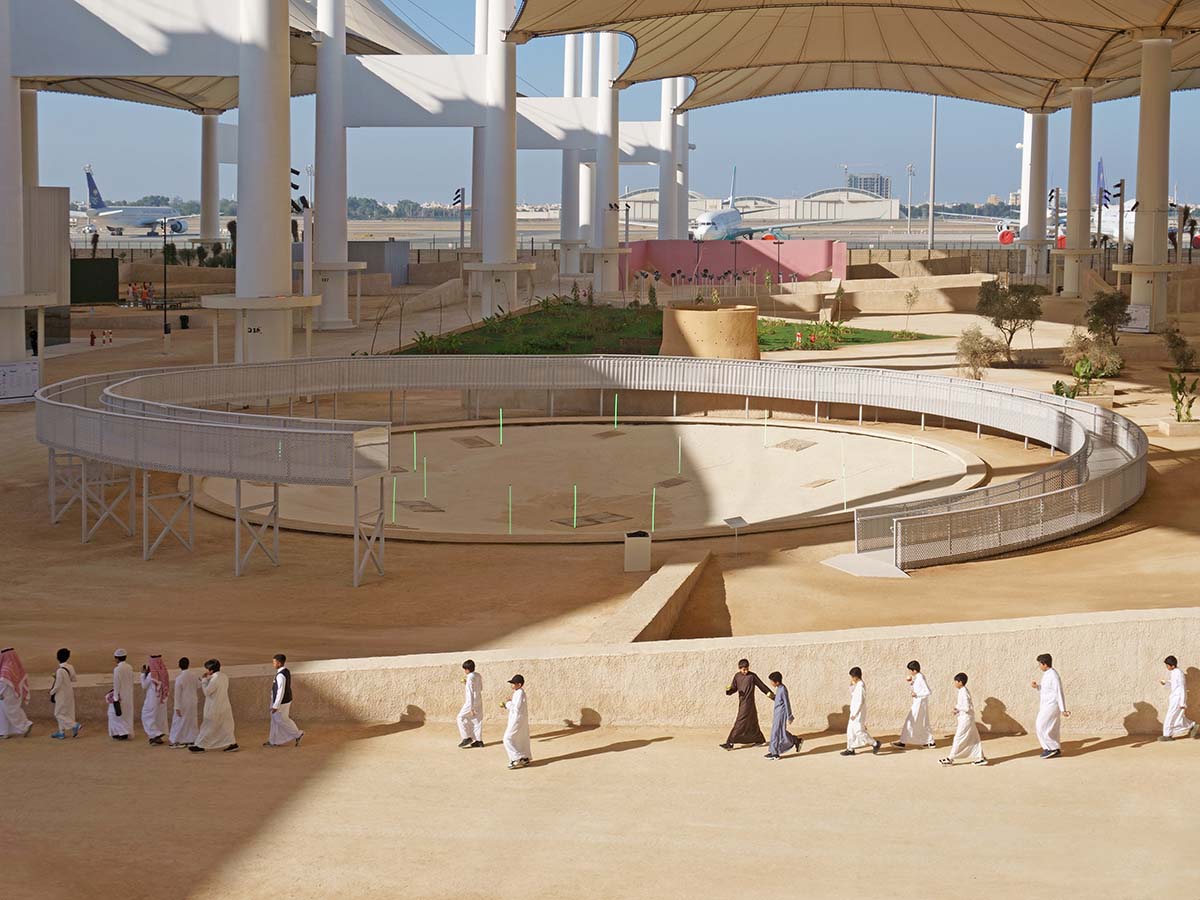
City as a Mosque by Studio Bound was exhibited in the Islamic Arts Biennale in Jeddah. Image © Ali Karimi
In the video, Vally also underlined that how the curatorial and artistic director roles feed her vision and practice in a pedagogical sense. According to the architect, her success as Artistic Director at the Islamic Arts Biennale is closely related to the concept of the biennale with architecture.
In the Islamic Arts Biennale, Vally was responsible for the development of Biennale's theme, concept, narrative, atmosphere, experience and theme identity, curation of contemporary commissions to the direction and narrative of the spaces.
See Vally's selections for the artworks she believed those works have embodied the themes of the 2023 Islamic Arts Biennale.
"Curatorial practice for me at least is it feels pedagogical"
"The Islamic Arts Biennale has been an incredibly interesting experience because it’s the inaugural edition. And also, I think because of the vision of the concept it's been incredibly architectural in its conception," Vally said.
"The artistic direction of the experience of moving from space to space the atmosphere and the rhythm and the change in mood as we move through the spaces and the construction of the narrative and how that manifests in space is for me an architectural endeavor."
"I think that curatorial practice for me at least is it feels pedagogical."
"Also, there is the setting up of a framework and a brief and there is a dialogical process where there's a give and take, a call, response and an engagement and a furthering of research, so it feeds into architectural practice periodically again."
"But this biennale was not just about selecting works; it was really about envisioning an experience from start to end, and for me that is an architectural act," Vally said.
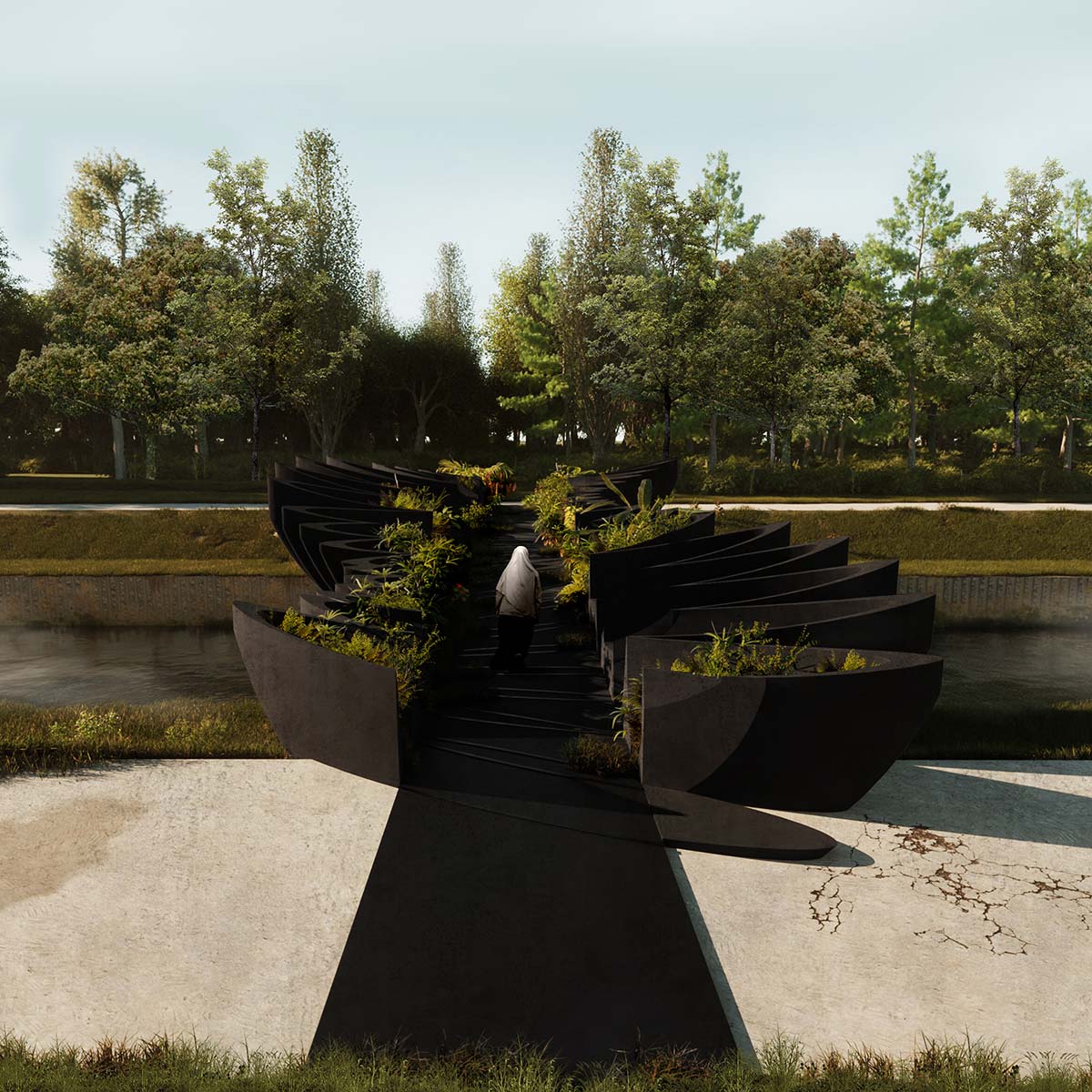
Sumayya Vally has won a competition to design the new Asiat-Darse pedestrian bridge in Vilvoorde, Belgium. Image courtesy of Counterspace
Upcoming projects of Sumayya Vally
Vally also talked about her upcoming projects, including a new Asiat-Darse pedestrian bridge in Vilvoorde, Belgium, giving an ode to the form of "smaller boats" informed by the story of Congolese agronomist and expatriate Paul Panda Farnana.
"I'm working at the moment on a project for a bridge in Belgium. The brief was for a pedestrian bridge but we're working on it so that it's become an active monument that is a series of guidance for reflection in honor of unnamed soldiers from the Congo who lost their lives in the region," Vally said.
"I'm also working on a contemporary outdoor gallery space in Nigeria that is constructed of rammed earth."
"And I'm working on a public plaza in Manchester."
"I think for the next while architecture is an incredibly slow profession but I am going to be focusing as much as possible on both works," Vally concluded.
Top image in the article: Sumayya Vally. Image © World Architecture Community.
